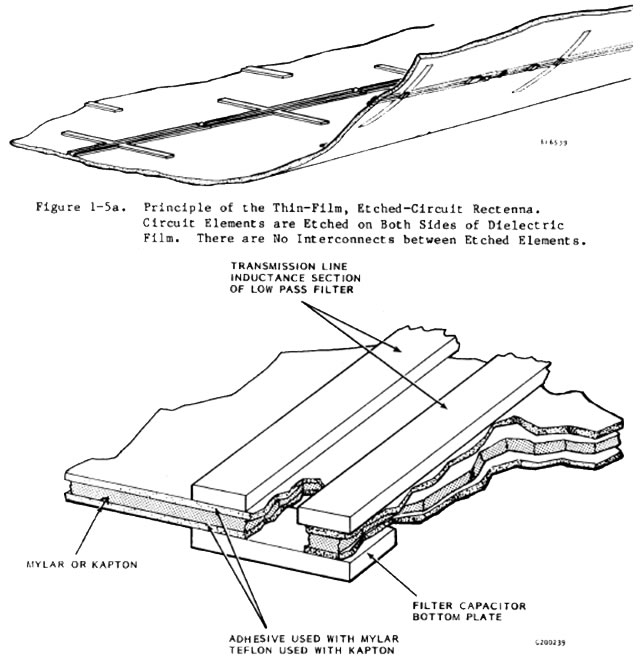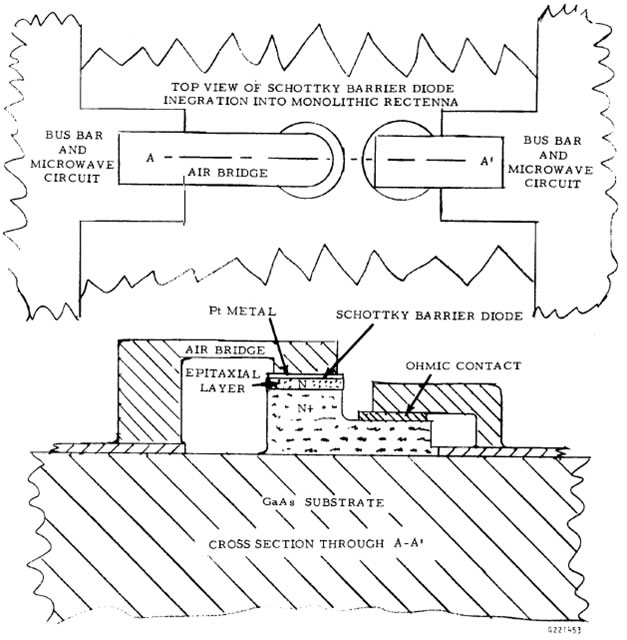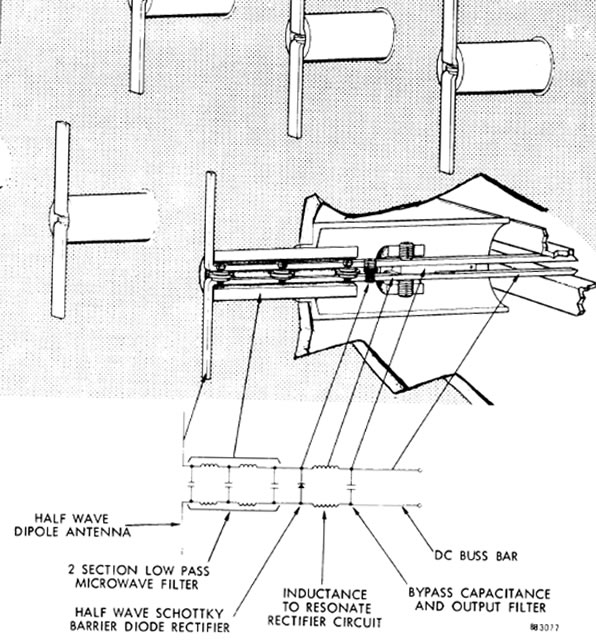The rectenna topology that will be used for the SSP project is shown in Figure G5. Instead of a half wave dipole, we will use a dish antenna which will collect the received power from the satellite.
For operation at 24.125GHz, we will use a completely monolithic approach in which the diodes and the all the circuitry are built up on a Gallium Arsenide (GaAs) substrate which we know can function at frequencies in excess of 250GHz.
The design of the monolithic rectenna at 20GHz consists of two parts. The first part is to make the Schottky Barrier diode on the GaAs substrate so that it can be properly connected to the microwave circuit. This is shown in Figure G6. The second part is the construction of the microwave circuit. The microwave circuit is composed of patterned conductors on the GaAs substrate. Those patterned conductors will be used at DC bus bars to collect rectified power. The conductors could be made out of copper or gold, to achieve higher conductivity. The thickness of the conductor will depends on the frequency of operation. Since we are using 24.125GHz, a thickness of about 85.1microns (double the skin depth).

Figure G7. Cutaway View of Rectenna Element Construction in Region of Capacitor for Low-Pass Filter Section

Figure G6. Diagram Illustrating the Schottky Barrier Diode Rectifier Portion of the GaAs Monolithic Structure for a Rectenna Element
Multiple rectenna circuits realized as shown in Figure G7 and connected to the receiving antenna dish through waveguides. Assuming that there is N number of rectennas, each rectenna will receive:

[15] suggests that a DC power output density of 3 to 10KW of DC power per square meter could be achieved using monolithic rectennas as our approach in rectifying the received microwave power. From this, we deducted that a 100000 to 333333.33 square meter rectenna array would be enough to produce at least 1GW of electric power and deliver it to the Earth power grid.
The DC to DC power conversion can achieved with a total possible efficiency of 76%. This can efficiency result can be expected if a good matching of components can be realized [14].
At high frequencies such as 24.125GHz, we can expect the efficiencies for the microwave system to lower than at lower frequencies. Weather condition such as rain can cause degradation in the power efficiency of the microwave system at 24.125GHz. Moreover, at such frequencies (24.125GHz), attenuation due to ionosphere is less tolerant than at lower frequencies.

